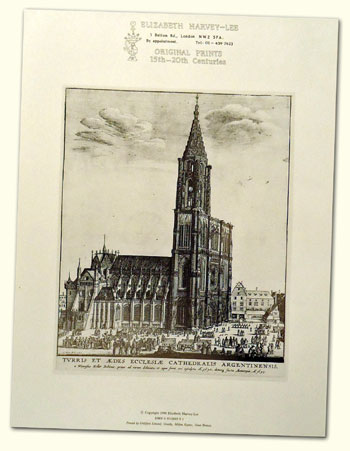|
GOLDEN
DECADES
 1630-40; 1740-50; 1880-90; 1920-30 1630-40; 1740-50; 1880-90; 1920-30
A miscellany from some of the richest periods of original
printmaking
1630
- 1640’s
Though
printmaking has a continuous history from the closing
years of the 15th century, certain periods reflect
increased activity and interest by artists. By the
early decades of the 17th century painters had taken
up etching as an original graphic art with enthusiasm
in almost all the artistic centres of Europe. These
are the decades when the young Rembrandt established
his reputation and produced the masterpieces of his
oeuvre in etching and drypoint.
In
parallel a new breed of avid print collectors was seen
in Holland, France, Italy, Germany and even England.
Some
artists, such as Jacques Callot, devoted their whole
careers to etching, others, such as Rubens and van
Dyck were primarily painters, but also contributed
important prints; yet others, such as Jan de Bisschop,
were not even professional artists but felt constrained
to master the new technique of etching.
Many
themes were tackled, portraiture, animals, architecture,
religion, genre; interpreted through observation of
contemporary life or invested with poetic grandeur
inspired by the antique.
1740 – 1750’s
In
the 18th century, with a few exceptions mainly in Italy,
interest in original etching as an art form declined.
But in Venice and Rome three outstanding artists continued
the tradition. Fantasy nurtured by classical studies
inspired Tiepolo, Canaletto and Piranesi, each in a
different and individual way.
1880 –1890’s
By
the closing decades of the 19th century not only was
the etching revival at its height but lithography had
become recognised as an artist’s original medium.
Enthusiasm for the design ideas of the newly
imported Japanese prints inspired printmakers in all
techniques and engendered a new respect for the
expressive potential of the woodblock. Japanese prints
also confirmed the significance of subjects drawn from
contemporary everyday life.
La
Belle Epoch, it was also a time when young women from
all strata of society became a recurrent theme with
some artists.
Paris
was a magnet which drew an international group of artists
to its academies and witnessed the first great ‘isms’ of
the birth of modern art. Art journals such as the "Gazette
des Beaux Arts" in Paris," The Studio" in London, "Zeitschrift
für bildende Kunst" in Berlin and the publications
of the "Gesellschaft für Vervielfältigende
Kunst" in Vienna, all containing authentic impressions
of artists’ original prints, spread artistic
ideas and increased the market for prints.
 1920 – 1930’s 1920 – 1930’s
The
years of the Etching Boom and the subsequent crash
witness the culmination of the etching tradition begun
in the 17th century. The Great War halted the pioneering
European modern movements ; many German Expressionists
turned to New Realism, Picasso and Archipenko to classicism.
It was the more traditional artists who were pre-eminent
in etching, particularly as the 1920’s progressed.
An
interesting school emerged in Czechoslovakia, but the
period could be considered a dialogue between Britain
and America. The Etching Clubs established in London,
New York, Boston, Chicago, and the English publications
"Print Collector’s Quarterly" and "Fine
Prints of the Year" promoted native and adopted British
artists such as Rushbury, Dodd, Brockhurst and Walcot,
visitors from America such as John Taylor Arms and
from Australia like Lionel Lindsay.
Wood
engraving in Britain received a new impetus and status
when the Society of Wood Engravers was founded in 1920
and the new medium of linocut put British printmaking
in the 1930’s briefly into the avant-garde.
Published
1990
48 pages, 136 items described and illustrated (b/w)
(UK
Price: £7, International orders: £10)
|